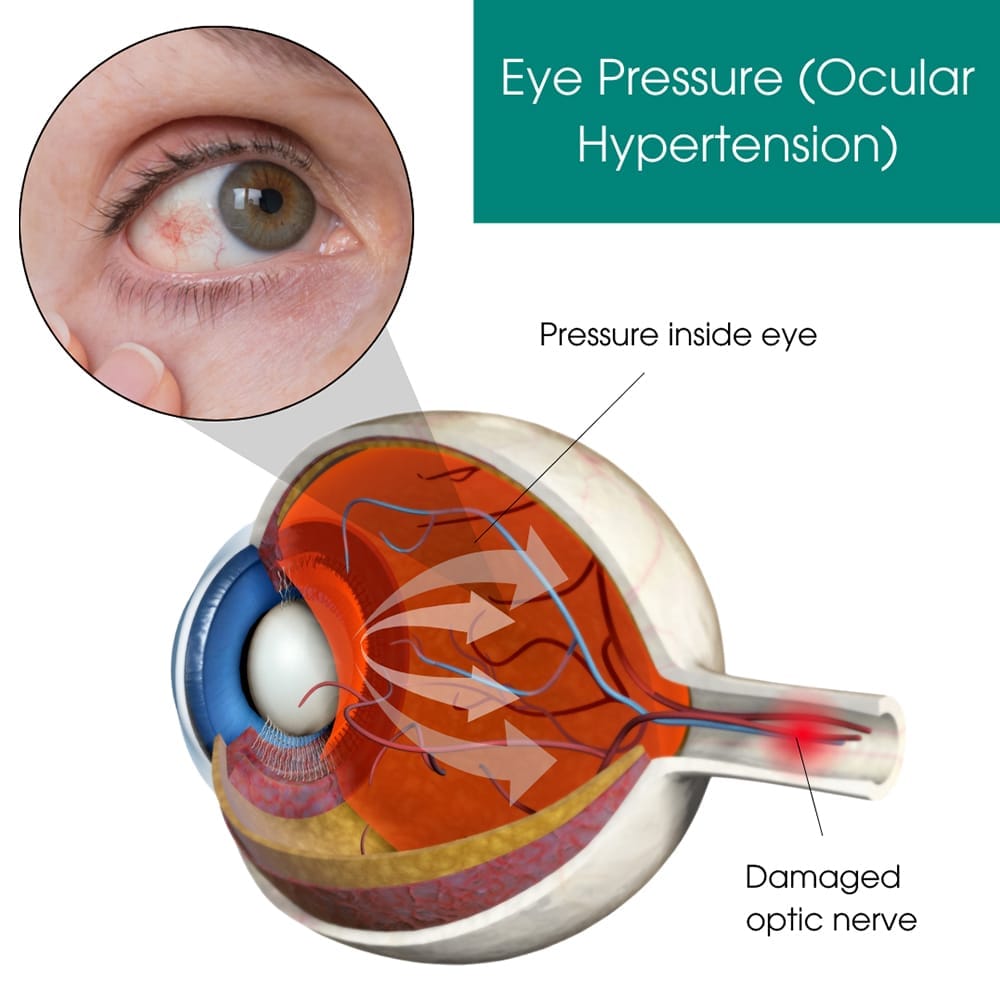 Ocular hypertension is a medical condition characterized by elevated intraocular pressure (IOP), which refers to the air pressure inside your eyes. While the condition is widespread and affects about five percent of the populace, the condition does go undetected due to its asymptomatic nature. It’s estimated that up to six million American adults are at an increased risk of developing glaucoma due to the unchecked pressure behind the eye.
Ocular hypertension is a medical condition characterized by elevated intraocular pressure (IOP), which refers to the air pressure inside your eyes. While the condition is widespread and affects about five percent of the populace, the condition does go undetected due to its asymptomatic nature. It’s estimated that up to six million American adults are at an increased risk of developing glaucoma due to the unchecked pressure behind the eye.
When you don’t have obvious symptoms like burning eyes, blurry vision and headaches, the safest bet to maintaining your eye health is through regular eye exams. For residents of NYC and Manhattan seeking the best optometrists, New York City-based Eye Physicians, provides you with accurate diagnoses and effective treatments. From treating a pink eye in your children to getting fitted for your contact lenses, you can usually get in and out in less than an hour.
The exact cause of intraocular pressure is unknown. The need for treatment for high eye pressure may be caused by an imbalance of the clear fluid in your eyes called aqueous humor. There is a cyclic process in the eye wherein the fluid is produced, and an equal amount removed, which helps keep the pressure between the eyes constant.
This fluid is also in charge of supplying nutrients while removing waste products from the cornea. Additionally, eye fluid helps the lenses change focus based on the light conditions. Any overproduction of the fluid in the eye or inadequate drainage leads to eye problems. The impact of the aqueous humor on ocular hypertension is huge. Your New York City optometrist may suggest additional testing if you have certain conditions such as:
The condition is more prevalent for people over the age of 40, of which nearly 10 percent are at risk of needing high eye pressure treatment. This is particularly relevant for African Americans and Hispanics who are considered high-risk candidates and should actively look for comprehensive eye care to rule out any pressure between the eyes.
Those with family members who have been diagnosed with glaucoma and ocular hypertension are also at a higher risk. The condition could impact both your eyes, so regular checkups are crucial. Studies show early detection decreases your chances of becoming blind due to glaucoma. Other risk factors associated with ocular hypertension include:
While you may not have common symptoms like double vision, ocular migraines, or dry eyes, an experienced optometrist like you find at Eye Physicians in Manhattan encourages you to receive a battery of tests until a cause of your discomfort is determined.
You can’t prevent ocular hypertension from developing. And typically, by the time you receive a definitive diagnosis, it’s already too late — you’re in the first stages of glaucoma. But when you visit Eye Physicians, and they have a suspicion of ocular hypertension, a diagnosis may be reached with additional tests such as:
According to the American Optometric Association (AOA), there is no definitive cure for ocular hypertension. Early detection and starting the treatment for high eye pressure as early as possible is the best plan of action. This is crucial to prevent the escalation of the condition to glaucoma.
For mild cases, your New York City based optometrist may suggest eye drops to reduce the pressure by 20 to 25 percent. If your condition demands it, you may also get medication with the eye drops such as:
In cases where your risk of getting glaucoma is high, you may need to consider laser treatments for eye pressure, such as laser photocoagulation. The selective laser trabeculoplasty (SLT) and argon laser trabeculoplasty (ALT) target the drainage angle of the eye. This means more of the aqueous humor fluid is removed, thus lowering the pressure inside the eye.
For the most comprehensive eye exams and the necessary follow-up intended to maintain the eyesight of you and your family, contact Eye Physicians in Manhattan. They provide 24/7 responses when needed, as well as emergency eye care and convenient appointments that have you in and out in less than an hour.
Eye Physicians
110 Lafayette St, Suite 503
New York, NY 10013
(212) 292-4814
Entrust the care of your precious eyesight to highly skilled and experienced eye care professionals. For top-notch ophthalmologists and optometrists in Downtown Manhattan, choose Eye Physicians. Eye Physicians ensures prompt care, precise diagnosis, and personalized treatment plans.
Schedule an Appointment